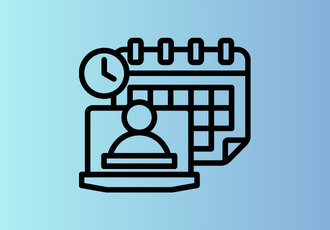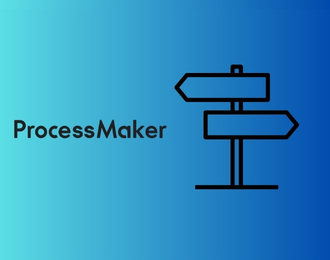Patient scheduling software is now indispensable for healthcare organisations seeking to streamline operations and improve patient satisfaction.
With widespread adoption, it can help reduce no-shows, scheduling inefficiencies, and double bookings—common challenges that plague the healthcare industry.
In fact, the global patient scheduling software market is projected to reach $1.5 billion by 2032, up from $546.1 million in 2025. This expansion is largely driven by increasing demands for efficiency, seamless integration with Electronic Health Records (EHRs), and the rise of cloud-based solutions.
This article evaluates the top 10 appointment scheduling software, highlighting their features, advantages, and disadvantages. We also shed light on why FlowForma emerges as an all-in-one healthcare management system.
Top Patient Appointment Scheduling Software for Healthcare in 2025
Before we go into details, here’s a quick overview of the top ten medical appointment scheduling software.
|
Software |
Best For |
Ease of Use |
AI Features |
Pricing |
|
FlowForma |
Mid to enterprise-grade healthcare organisations |
Very easy for business users and IT teams |
Advanced AI agents |
Process-based; Starts at €2,067 per month |
|
Kissflow |
Small to mid-sized health systems |
Easy |
Basic AI features |
From $1,500/month |
|
Nintex |
Large enterprises with complex needs |
Medium to difficult |
Limited AI |
Custom |
|
Camunda |
Custom workflow-heavy healthcare setups |
Medium |
No AI |
Free + Enterprise |
|
MediNav (by Servelec) |
Small practices and clinics |
Easy |
No AI |
Usage-based pricing, with plans starting at €49/month |
|
Appian |
Large healthcare systems |
Medium |
AI features |
Custom |
|
Cflow |
Small healthcare teams |
Easy |
No AI |
Starts at $11/user/month, billed annually |
|
Netcall (Liberty Create) |
Complex workflows in large setups |
Medium |
AI features |
Custom |
|
Microsoft Power Automate |
Microsoft-centric organisations |
Medium |
Basic AI features |
$15/user/month or $150-$215/bot/month plans. |
|
Formstack |
Small practices and medical groups |
Easy |
No AI |
Tiered pricing: Forms + Suite Plans |
10 Patient Scheduling Software for 2025: A Detailed Analysis
Now that we’ve taken a quick look at the top tools, let’s analyse each patient scheduling system in detail.
1. FlowForma
Automate healthcare processes using FlowForma
FlowForma is an AI-powered business process automation platform designed to meet the rigorous demands of the healthcare sector, whether for mid-sized companies or enterprises.
It helps healthcare institutions, including the NHS in the UK, automate scheduling workflows without relying on IT. The platform automates repetitive administrative tasks and seamlessly integrates with Microsoft 365, enabling smooth collaboration and data sharing.
FlowForma's intuitive interface is perfect for healthcare providers who want to create custom workflows for patient appointment scheduling without needing any coding knowledge.
FlowForma Key Features
1. AI-Powered Automation
FlowForma’s AI Copilot simplifies automation by instantly generating structured workflows from simple text prompts, uploaded images, or voice inputs. With predefined rules, dynamic conditions, and real-time testing, healthcare providers can create seamless and intelligent workflows tailored to each patient's needs.
Watch this demo to see how FlowForma’s AI Copilot can set scheduling rules and customise workflows for different patient needs.
Automate appointment scheduling for patients with FlowForma
In addition, Agentic AI makes intelligent, real-time decisions within the workflows. It can automatically escalate urgent cases, pause processes for missing information, and route tasks based on sentiment analysis, improving efficiency and patient experience.
2. Microsoft 365 Integration
FlowForma integrates seamlessly with Microsoft 365 tools like SharePoint, Teams, and Outlook. This allows healthcare organisations to manage appointments, share updates, and track schedules directly within their existing Microsoft ecosystem.

FlowForma offers seamless integrations
For example, Blackpool Teaching Hospitals NHS significantly streamlined operations by adopting FlowForma, which directly tackled their inefficient paper-based workflows and entrenched legacy systems.
The hospital digitised numerous processes, from accommodation requests to new staff onboarding, enhancing accuracy and cutting administrative burdens.
Crucially, FlowForma integrated with their existing Robotic Process Automation (RPA) software, effectively bridging their existing infrastructure with modern needs.
Watch the full case study to learn more:
FlowForma NHS Case Study
3. No-code Interface
FlowForma’s no-code interface enables healthcare teams to easily design and automate workflows without needing coding expertise.
With drag-and-drop functionality, users can create and modify patient scheduling or onboarding workflows, reducing reliance on IT and allowing faster implementation.
Watch this demo on patient onboarding to learn more:
Patient onboarding using AI Copilot
4. Document Generation
FlowForma automatically generates patient appointment confirmations, reminders, and reports.

Automate patient documents using FlowForma
Once an appointment is scheduled, the system automatically creates and sends the necessary documentation directly to patients. This feature ensures accuracy, saves time, and helps maintain compliance with regulations such as HIPAA and GDPR.
5. Audit Trails and compliance
For NHS organisations utilising FlowForma for patient scheduling, audit trails log every action, providing an immutable record. This ensures compliance with regulations like the General Data Protection Regulation (GDPR) and the NHS's own stringent clinical governance standards.
6. Custom intake forms
FlowForma’s custom intake forms can be tailored to specific departments, clinics, or even appointment types.
For example, a new patient booking for ophthalmology may require specific vision-related questions, while a follow-up for orthopedics may need different details. These forms can incorporate conditional logic, adapting questions based on previous answers, streamlining data collection and preventing irrelevant inquiries.
Watch this video to learn more about FlowForma’s custom forms.
FlowForma’s custom form builder
FlowForma Pros
- Approved NS vendor on the G-Cloud 13 Framework, N365 and NHS London Procurement Partnership
- Easy to use, with an intuitive, user-friendly interface
- Transparent pricing with no hidden fees
- Provides access to schedules and workflows on mobile devices
FlowForma Cons
- Requires a SharePoint Online and/or Office 365 environment
FlowForma Pricing
FlowForma follows a transparent, process-based pricing. This gives it an added advantage over its competitors by ensuring cost predictability and scalability for organisations.
Unlike a per-user model, which can become prohibitively expensive as a team grows, FlowForma's approach allows you to automate at scale with a clear, fixed cost per process, eliminating financial guesswork and hidden fees.

FlowForma’s process-based pricing model
2. Kissflow

Kissflow healthcare page
Kissflow offers a low-code platform that enables healthcare organisations to automate patient scheduling workflows, appointment reminders, and other administrative tasks.
It offers an intuitive drag-and-drop interface, enabling teams to quickly create custom workflows.
Kissflow Key Features
- Intuitive interface to design patient scheduling workflows
- Supports integration with Google Workspace and EHR systems
- Includes templates tailored to healthcare scheduling needs
Kissflow Pros
- Suitable for both small practices and larger organisations.
- Easy to use, with minimal training required.
- Offers customisation for unique healthcare scheduling needs
Kissflow Cons
- Limited customisation for highly complex workflows.
- Slow response times from customer support can cause delays
3. Nintex

Health & Life Sciences Page from Nintex
Nintex is a workflow automation platform that streamlines patient scheduling by automating approval processes, scheduling changes, and appointment reminders. The platform focuses on automating document-heavy workflows, reducing manual administrative work.
Nintex Key Features
- Creates patient documents like appointment confirmations and medical records automatically
- Provides insights into workflow performance, appointment trends, and scheduling bottlenecks
- Integrates with Microsoft 365, Salesforce, and ERP systems.
Nintex Pros
- Provides document and approval automation
- SharePoint and Office 365 integration
- Customisable for complex workflows
Nintex Cons
- May be expensive for smaller practices or clinics
- The platform is complex to utilise without a technical team
4. Camunda

Camunda’s healthcare solutions page
Camunda is an open-source process orchestration platform designed for automating complex workflows, including patient scheduling. It provides the flexibility and scalability required by larger healthcare organisations with intricate scheduling and workflow needs.
Camunda Key Features
- Highly customisable for technical teams
- Automates scheduling tasks, including patient appointment reminders and confirmations
- Supports integrations with various healthcare management systems.
- Provides real-time insights into workflow performance.
Camunda Pros
- Ideal for complex, multi-step workflows
- Can connect to a wide range of external systems for seamless data exchange
Camunda Cons
- Setup and customisation require a high level of technical knowledge
- Not as user-friendly for non-technical healthcare staff
5. MediNav (by Servelec)

MediNav homepage
MediNav is a cloud-based scheduling solution designed to meet the needs of small healthcare practices and clinics.
It enables healthcare providers to manage patient appointments, recurring appointments, and onboarding processes with ease, while also automating reminders and notifications.
MediNav Key Features
- Simple and easy-to-use interface
- Accessible from both mobile and desktop devices for convenience
- Real-time updates and appointment management
- Integrates with EHR systems, ensuring patient data is always up-to-date and accessible.
MediNav Pros
- A budget-friendly option for smaller practices and clinics
- Well-suited for healthcare-specific workflows
- User-friendly interface
MediNav Cons
- Not as well-suited for larger organisations with extensive scheduling needs
6. Appian

Appian Life Sciences page
Appian is a low-code platform that enables healthcare organisations to automate a wide range of administrative processes, including patient scheduling. It’s designed to scale, making it suitable for both small practices and large healthcare institutions.
Appian Key Features
- Enables healthcare organisations to automate scheduling without extensive coding
- Uses AI to optimise resource allocation
- Provides real-time visibility into scheduling and workflow performance
Appian Pros
- Quick to implement
- Can handle a wide variety of healthcare scheduling needs
- Uses AI to improve scheduling efficiency and resource management
Appian Cons
- Expensive for small and medium-sized healthcare organisations
- Some technical knowledge is needed to leverage the platform fully
7. Cflow

Cflow healthcare page
Cflow is a visual workflow automation tool designed for smaller healthcare teams. It allows users to create simple, visual workflows for patient self-scheduling, appointment reminders, and patient communication with minimal IT intervention.
Cflow Key Features
- Drag-and-drop interface to build scheduling workflows
- Integrates with other healthcare systems for seamless data exchange
- Provides real-time tracking of scheduling performance
Cflow Pros
- Intuitive interface with minimal training required
- Cost-effective solution for smaller practices
- Deploys quickly, with minimal configuration required
Cflow Cons
- Not suitable for larger healthcare organisations with more complex workflows
- Lack of customisation for organisations needing highly tailored workflows
8. Netcall (Liberty Create)

Liberty Create Homepage
Netcall’s Liberty Create platform provides intelligent automation for patient scheduling. Its AI-powered workflows provide a better patient experience, improve scheduling accuracy, and reduce manual errors.
Liberty Create Key Features
- Low-code workflow automation
- Automates decision processes in patient scheduling, reducing errors.
- Integrates with a variety of healthcare management systems.
Liberty Create Pros
- Helps generate and manage complex workflows
- Advanced AI Capabilities
- Supports custom integrations to suit specific organisational needs
Liberty Create Cons
- The pricing model is difficult to navigate for small to mid-sized healthcare providers
- Full utilisation requires some technical knowledge, despite no-code functionality
9. Microsoft Power Automate

Microsoft Power Automate Platform
Microsoft Power Automate enables healthcare providers to automate patient scheduling workflows within the Microsoft 365 ecosystem.
It integrates seamlessly with Microsoft 365 and provides a variety of pre-built templates for healthcare organisations to quickly implement scheduling workflows.
Microsoft Power Automate Key Features
- Connects with Outlook, Teams, and SharePoint
- Offers ready-to-use templates for quick implementation
- Supports customisable workflows to meet specific scheduling needs
Microsoft Power Automate Pros
- Suitable for organisations already using Microsoft 365
- Pre-built templates simplify the setup process.
Microsoft Power Automate Cons
- Limited outside the Microsoft ecosystem.
10. Formstack

Formstack healthcare page
Formstack is a no-code form and workflow automation tool that helps healthcare organisations streamline appointment booking and patient communications. It is simple to set up and offers secure data handling, making it a good choice for small to mid-sized practices.
Formstack Key Features
- Build appointment booking forms without any coding
- Automates scheduling tasks such as reminders and confirmations
- Ensures compliance with healthcare regulations like HIPAA.
- Integrates with CRM and other healthcare tools.
Formstack Pros
- Works well with existing healthcare tools and systems
- Cost-effective for small to mid-sized healthcare organisations
Formstack Cons
- Lacks the advanced AI capabilities found in other tools
Why FlowForma is the Top Choice for Patient Scheduling

FlowForma customer testimonial
FlowForma stands out as the leading tool for healthcare providers looking to optimise their scheduling processes.
With its intuitive no-code platform and advanced AI-powered automation, it streamlines tasks like appointment confirmations, patient reminders, and recurring appointments, helping teams save time, reduce errors, and thereby improve patient acquisition.
Its seamless integration with Microsoft 365 ensures smooth communication and collaboration across departments, while mobile access provides the flexibility to manage appointments from anywhere.
FlowForma’s ability to automate complex patient scheduling workflows while remaining user-friendly makes it the go-to solution for healthcare organisations aiming to optimise operations and deliver better patient care.
Book a demo today to see FlowForma in action.
FAQs
What is the importance of a medical appointment scheduling tool?
A medical appointment scheduling tool is crucial for healthcare providers and patients alike. It improves efficiency by automating bookings, sending reminders to reduce no-shows, and optimising staff and resource allocation. For patients, it offers convenience, 24/7 access to scheduling, and reduces wait times, ultimately enhancing their overall experience.
How to choose the right patient scheduling software?
When choosing patient scheduling software, prioritise:
-
User-friendliness: Easy for both staff and patients
-
Integration: Seamlessly connects with existing EHR/PMS
-
Features: Includes online self-scheduling, automated reminders, custom forms, and reporting
-
Compliance & security: Adheres to data privacy regulations (e.g., HIPAA, GDPR)
-
Scalability: Can grow with your healthcare organisation.
-
Remote access: The software should be easy to use on mobile devices
.png) By
By 




